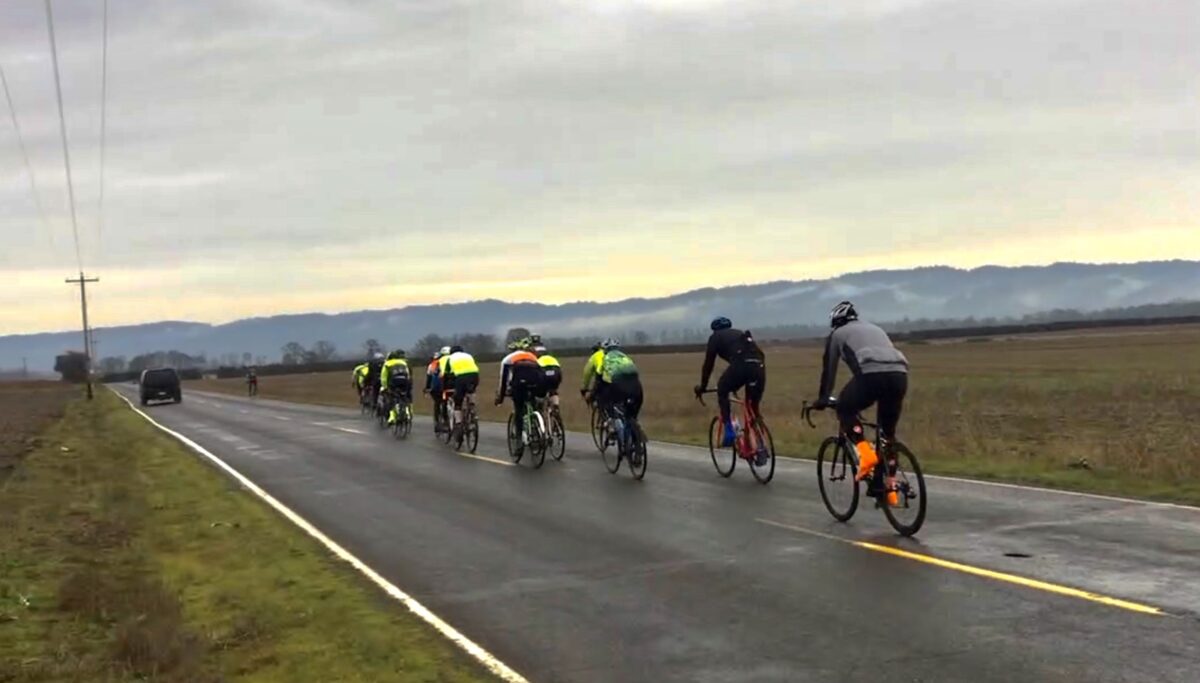
(Photos: Jonathan Maus/BikePortland)
New speed limit signs installed by Multnomah County late last month should encourage lower speeds on a major cycling route on Sauvie Island.
NW Gillihan Road is the southern half of the main loop around the rural, farm-dotted island about 10 miles north of downtown Portland. The scenic and usually low-traffic roads on Sauvie Island are a big draw for bicycle riders who seek a quick escape from the city. The only downside is that, like with many rural roads, there isn’t much room on the shoulder. When car users pass bike riders at high speeds, it can be very stressful.
Island residents formally requested the lower speed limits. Multnomah County responded to the concerns by requesting a speed limit reduction from 55 mph to 45 mph on the six-mile stretch of road. The Oregon Department of Transportation studied the road and granted their request in fall 2021. These will be new signs, since the road previously had a statutory speed (default speeds set in Oregon law for specific types of roads) and was not required to have speed limit signs.
Advertisement
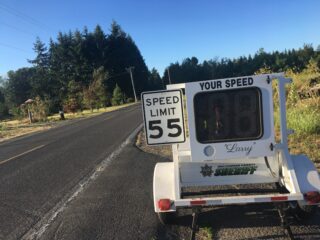
This move comes four years after Multnomah County banned booze on the island during the summer due in large part to traffic safety concerns.
The lower speeds on Gillihan should help improve road safety on the island and might even help tamp down ongoing tensions between some drivers and bike riders.
If you ride out there regularly, let us know if you notice any difference.


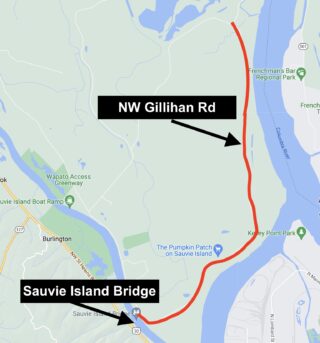
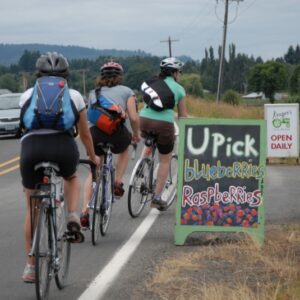


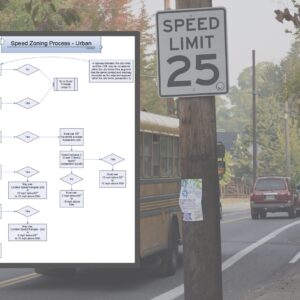
Thanks for reading.
BikePortland has served this community with independent community journalism since 2005. We rely on subscriptions from readers like you to survive. Your financial support is vital in keeping this valuable resource alive and well.
Please subscribe today to strengthen and expand our work.
1. Put up Speed Limit sign.
2. Speed Limit not enforced.
3. Speed Limit is now meaningless and ignored by those that ignore inconvenient laws.
4. Priceless.
5. Repeat starting at 1.
I disagree. Obviously enforcement is important, but saying the reduced speed limits and signage does nothing is just so wrong in my opinion. I drive and I notice and obey speed limit signs. So my kids and other folks I know. And once these signs are in the County’s GIS/data mapping layer, they will be a part of onboard car computer systems (like the one in my new car that shows the speed limit and often will change at the exact spot in the road where I see the sign) that shows speed limits on dashboards and so on.
Despite the popular narrative that everyone is lawless and the streets are a hellscape, I find it quite unproductive and actually quite unhelpful to dismiss good faith efforts like this to actually do something.
Also, the point you might be missing is that lower speed limits have a huge impact on legal cases if/when someone is hit. As in, judges/lawyers/cops/insurance adjusters will all base their analysis of a case on the posted speed limit. So if you got hit in a 55 mph zone by someone going 60 mph their speed wouldn’t be a big factor in the case. But if you get hit by someone going 60 mph in a 45 mph zone, all the sudden they face a lot more fault and possible punishment for their speed.
>but saying the reduced speed limits and signage does nothing is just so wrong in my opinion
It probably relies on how its done, where its done, and who enforces transgressions against it.
The speed reduction on N Willamette has been, as predicted, completely useless. It has increased the amount of people just straight up driving in bike lane to bypass law-abiding motorists.
We know that outside of enforcement, the large majority of motorists will choose to drive an dangerous manner. Even in places with higher traffic enforcement its still routine for people to drive 5-10 mph over the speed maximum.
Sauvie Island is Multnomah County, and they still to enforce public safety laws so I’d guess it’ll be more effective than a speed reduction in Portland, where everyone knows laws don’t exist and you can basically do whatever you want.
I think the data bears out that simply existing in the City of Portland is far more dangerous than it was even three or four years ago. Everyone except PBOT are completely pessimistic about the PBOTs ability to deliver useful, safe infrastructure and its going to cast a shadow of everything they do.
PBOT used to build subpar infrastructure and hype the hell out of it, but it all relied on the roads being generally safe. Now, no one is buying it.
This is Multnomah County catching frustration that is really about PBOT. I don’t think PBOT is acting in good faith when they refuse to install evidence-based traffic infrastructure. I don’t think PBOT is acting in good faith when we have to “pilot” projects to make their roads meet safety standards. PBOT, like the rest of the city government is failed, and they no longer serve the residents of this city or act as responsible stewards of our money.
cmh89,
OK. thanks for sharing your opinion. You have a much more gloomy perspective than I do. Not saying I think everything is fine. I’m just saying that I think things are super f’d up and messy right now and everyone – from individuals to gov’t agencies – are struggling and trying to cope with it. PBOT is far from perfect and I’m one of their most ardent critics, but I absolutely think they are not “failed”.
Also, I agree that people will continue to drive over the speed limit… Which is why we need to get limits as low as possible! 5-10 over 55 mph is a lot more dangerous/deadly than 5-10 over 45!
Some argue that, absent enforcement, people will drive in whatever manner feels comfortable given the built environment (a position I don’t fully embrace). If so, I would agree that 5-10 over 55 mph is about as dangerous as 15-20 over 45.
In fact, the 55 limit might be safer, because there will be less variability in people’s behavior, and everyone will know what to expect.
Underlying this is a factual question about whether lowering speed limits absent any other intervention improves safety. If it does, then I agree we should be lowering speed limits where it makes sense to do so, even if we aren’t enforcing them.
And who knows? We might end up electing some leaders who see value in enforcing traffic laws, and having lower limits in place would be beneficial.
Maybe you know something I don’t. I can think of one piece of infrastructure they’ve built in the last decade that I consider high quality and it isn’t done yet (Better Naito). I do see a lot of missed opportunities. For example, they had a great opportunity during the pandemic to make the greenways actually green…and they chose plastic barrels. Then, they decided to make those plastic barrels permanent instead of doing actual traffic diversion. They lie about the efficacy of their projects. They constantly find $100 solutions to $10 problems in order to make sure motorist speed and access isn’t impacted. They are without a doubt, complete failures in every respect. Even outside of bike related things they fail. People who live on N. Fessenden complained for years about the speed of traffic. People died. They wouldn’t take action until two people died, including older women who had lived in her house for decades. They basically need a blood sacrifice to install safety infrastructure.
And, I like you, I like the reporting you do, and I like your site. I would not, in anyway, consider you a critic of PBOT. You unfortunately take them at their word far too often and do not press them on how they justify their decision making.
Either way you’re probably going to die or be maimed
Yes, your chance of survival of being hit by a car doing 45 MPH is under 50%, so I don’t care whether the car is doing 45 or 65; there’s no effing way I’m riding my bike on that road either way.
I’d much prefer the cars drive at 45, much better reaction time for the driver and while being passed at a closing speed of ~25 is not super pleasant it’s way nicer than ~45.
You do you, but the riding out on Sauvie is really nice and traffic is very light most of the time. I’d much rather do the equivalent time on rural roads vs Portland streets. Intersections are the main danger to cyclists, the city has 100x more per ride.
“We know that outside of enforcement, the large majority of motorists will choose to drive an dangerous manner.” Please provide the evidence you based that on.
Your critique is not without merit. But as we all know, you can only speed as much as the person in front of you. If it’s busy enough (and summer traffic on Sauvie Island can get pretty busy), someone is bound to be going relatively near the speed limit, slowing down everyone behind them.
Sure, when there is little traffic and/or off busy season, scofflaws can speed as much as they want, but that’s already the case.
Without consistent enforcement this may only be a marginal improvement in speed and safety. Maybe it’s worth it. Maybe not. But I don’t think anyone will know if don’t do anything.
The speed limit changes in Portland have lowered speeds. PBOT published the data. Validating drivers that want to drive a reasonable speed slows the speeders down.
Did they publish something new? The only thing I remember is when they, in their manner, heralded their own success which turned out to be a reduction in speed of a “small amount”.
I honestly don’t trust PBOT numbers regardless. The two times I’ve taken a deep dive into their work I’ve found basic research errors that would fail a student in a freshmen Research Methods class.
Drivers may respond differently to speed limits in the city than on a straight rural highway.
Even 45 mph on those roads seems to fast. 35 seems more appropriate. It’s a small island so where are people rushing to?
Lots of Deer should be introduced on Sauvie Island. Folks will drive slower (maybe even 25 mph) if it means they won’t hit a deer and do damage to their car.
So, you propose outsourcing traffic enforcement to deer now?
Yeah, I mean … where does the buck stop?
I agree! But this is a classic example of the type and feel of the roadway leading to the speeding. It’s wide open, good sight lines, and very easy to go fast without even realizing how fast you’re going. So I don’t think it’s people rushing, it’s more of a design issue.
Its good they responded to the local population’s concerns BUT given how much more deficient the design of this roadway is they do need to do more. Getting hit by an SUV at 45 vs 55 is still a death sentence for most cyclist or pedestrians…it really only helps drivers in a crash with all the modern “driver error mitigation” gear.
This segment like many others in our exurban rural interface needs rural traffic calming/ speed management. In my 2010 cycling tour study of Dutch and Germany rural roadways I saw a lot of it that would also work here in the PNW…but sadly it may as well be Mars.
I have biked on Sauvie Island many times. I have driven on Sauvie Island many times. What really would be nice is a new and separated bike path next to the roads. It would be impossible in a few spots and would undoubtedly require condemning a strip of land next to the roads on a multitude of private properties, so it will probably never happen. Being hit on a bike by a car going 45 is still going to kill me, in all likelihood. 35 mph is too slow on Gillihan road. 35 mph makes sense between Reeder Beach RV Park and Sauvie Island Beach due to the narrowness of the road and, especially once in Columbia County, the bad surface. Bicyclists need to realize that not every road in the countryside is going to be made to be friendly to bicyclists and if you don’t like it, don’t ride it, it’s that simple. I have been infuriated by bicyclists riding side by side on Gillihan Road and not single file, as the law states, when I was driving behind them and other cars were piling up behind me and there were too many oncoming cars to be able to pass the bicyclists — for over two miles. Those bicyclists who did that need to realize they’re not doing the cycling community any favors by not getting single-file so that me and the dozen cars behind me could pass them. They’re also lucky nobody road-raged on them, I would never do that, no matter how pissed I get (and I was mighty pissed at those cyclists), but some people do, and riding side by side at 18 mph on a country road, purposely not letting the dozen cars behind them pass, was really putting their own lives at risk due to the fact that someone else might run them over on purpose to get past them. Even with other cars around, some people get that mad that they don’t think straight and will run bicyclists over and take off, not thinking of the consequences. Too many cars speed on Sauvie Island, putting everyone at danger, I’ve seen people pass on blind curves on that island in their cars, so I stopped riding my bike out there, there are safer places to go, especially summer weekends when the drunkards abound — and don’t think for a second that the alcohol ban in the summer has stopped drinking on the beaches out there, even (and especially) on weekends, the alcohol is now hard liquor and mixers in Hydroflasks and Nalgene bottles.
“They’re also lucky nobody road-raged on them”
This justification for homicidal acts needs to be confronted not rationalize or placated. Just a whole bunch of words to say you think cycling should be banned from rural roads. It’s some bizarre unity between bike hating rural idiots and urban 8-80 bike safety wonks. Cycling, just like driving, is always going to be somewhat unsafe. We have created technology in the last 150 years that hurtles is through space at hitherto, evolutionarily, unprecedented speeds and energies. But we can make it safer by addressing the thing that creates the most danger, cars and the reckless people who drive them. And my having consistent rules of the road governing safe interactions between modes. But declaring every road inhospitable to cyclists just makes the cyclist who are out here now, riding the majority of the miles/hours less safe. We will never, ever have a parallel system of paths that grant cyclist access to rural, suburban or even urban spaces. It is just comically inefficient or physically impossible. And as we have seen with our urban MUPs venerable to other safety issues.
You don’t need a separated facility when the speed is low enough. Cars and riders can share.
You were “mighty pissed” because you couldn’t go faster? Interesting.
Yep, I was. You would be too. Especially since the bicyclists were breaking the law by riding side by side when cars were backed up behind them. For two miles. It was rude and inconsiderate of those bicyclists, and passive aggressive. People generally get upset when people are rude and inconsiderate and passive aggressive towards them.
Maybe it wasn’t passive-aggressiveness, but obliviousness.